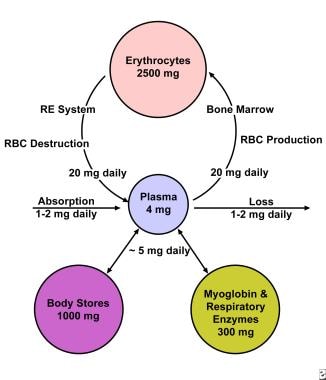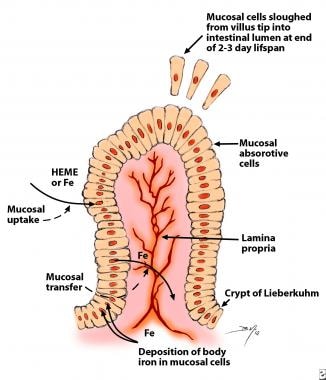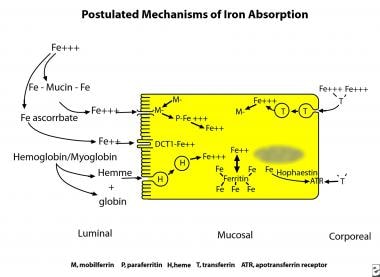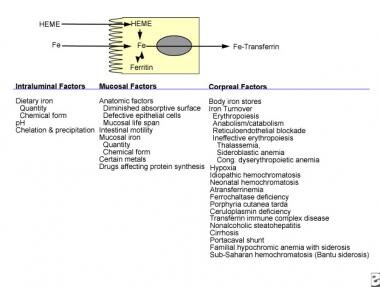Below is a chart showing the different kinds of oral iron supplements:
 (Treating)
(Treating)In patients who either can't absorb iron, or do not respond to the oral iron tablets, parenteral iron is a good option. It "has been used safely and effectively in patients with inflammatory bowel disease (eg, ulcerative colitis, Crohn disease), as the ferrous sulfate preparations may aggravate the intestinal inflammation" (Harper). However, perenteral iron is more expensive and has a greater morbidity than the oral tablets, so in general the tablets are safer (Harper).
Another option for patients who do not respond to the oral tablets are ferric carboxymaltose injections. Approved in 2013 by the FDA, this treatment has also been shown to work for patients with non – dialysis-dependent chronic kidney disease (Harper).
High dosage of oral iron supplements, more than 45 mg, is not recommended, especially for women who are pregnant or nursing (Iron).
If the iron deficiency anemia is caused by an internal hemorrhage, managing the hemorrhage is a possible treatment to stop continued anemia. This may include surgery on "neoplastic or nonneoplastic disease of the gastrointestinal (GI) tract, the genitourinary (GU) tract, the uterus, and the lungs" (Harper).
A transfusion of packed RBC is also an option, specifically "for patients who either are experiencing significant acute bleeding or are in danger of hypoxia and/or coronary insufficiency" (Harper).
Works Cited:
Harper, J. (n.d.). Iron Deficiency Anemia. Retrieved September 14, 2015.
http://emedicine.medscape.com/article/202333-overview#a7
"Iron." WebMD. WebMD. Web. 19 Oct. 2015. <http://www.webmd.com/vitamins-supplements/ingredientmono-912-iron.aspx?activeingredientid=912&activeingredientname=iron>.
"Treating Iron Deficiency." Treating Iron Deficiency. Web. 19 Oct. 2015. <http://www.pharmacytimes.com/publications/issue/2011/june2011/treating-iron-deficiency>.
 (11 Reasons)
(11 Reasons) (Harper)
(Harper)
 (Harper).
(Harper). (Harper).
(Harper).